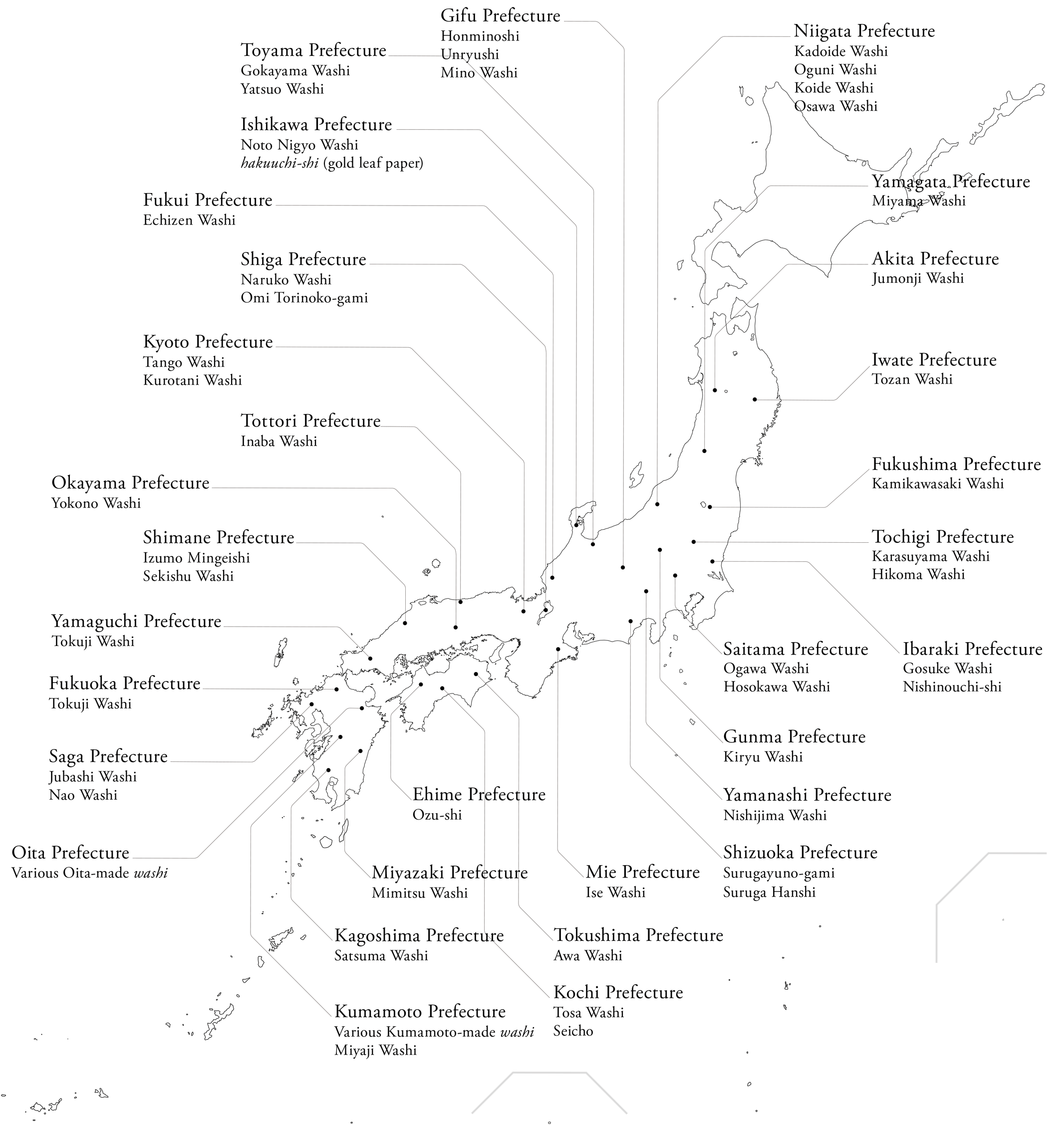Paper was invented in China about two thousand years ago, and reached Japan around the seventh century by way of Korea. Japanese washi paper is characterized by being strong and pliable. The tame-zuki paper making method that was passed on to regions west of China is based on placing the pulp mixture onto a screen that is kept level. The fibers used are short and the resulting paper is less dense.
In contrast, washi, is typically made using the nagashi-zuki method, in which a viscous substance made from plants is added into the pulp mixture, and the screen is rocked back and forth and from side to side so that the mixture flows over the screen. This allows the paper to be made with longer fibers, which become tightly interwoven, resulting in a stronger product. This strong, thin paper is used not only for books, drawings, and paintings, but also as a material for architecture and everyday items including sliding paper screens (shoji) and partitions (fusuma), umbrellas, andon lamps, and garments.
When machine-made paper from the West began to be imported into Japan in the Meiji Period (1868–1912), people referred to Japanese paper as washi in order to distinguish it from Western paper.























